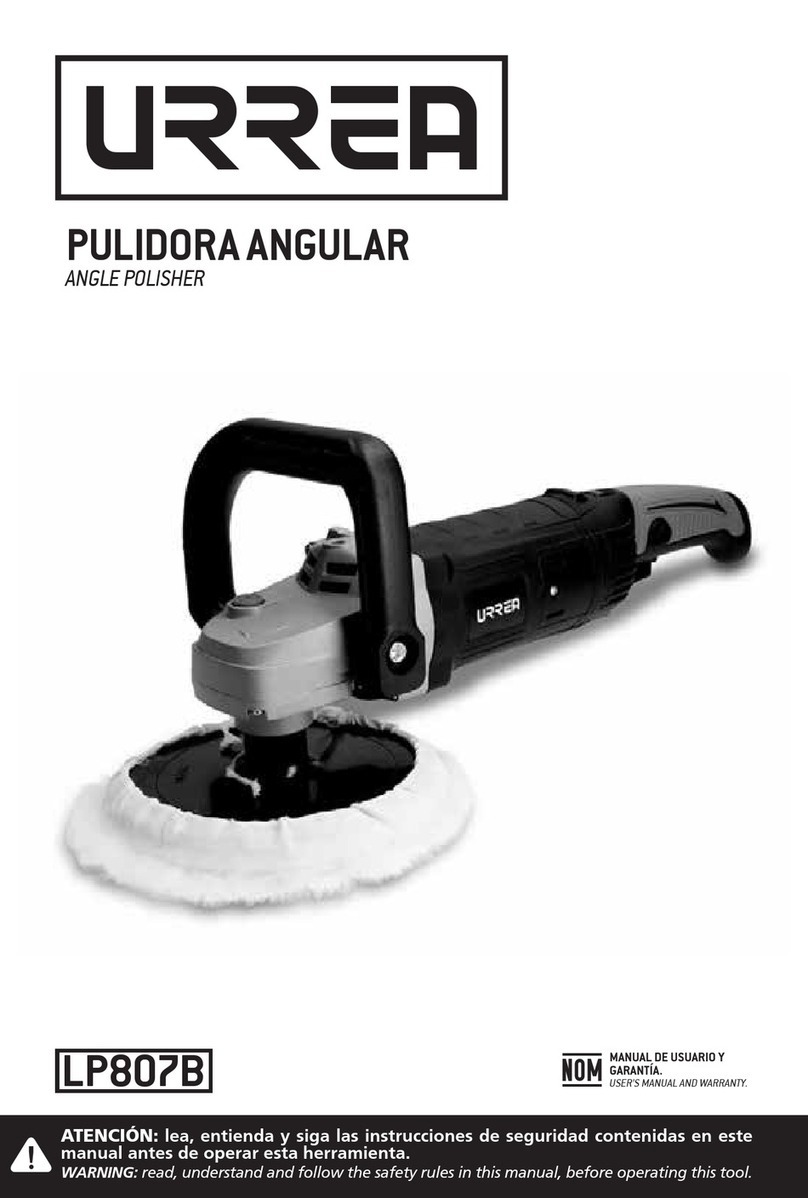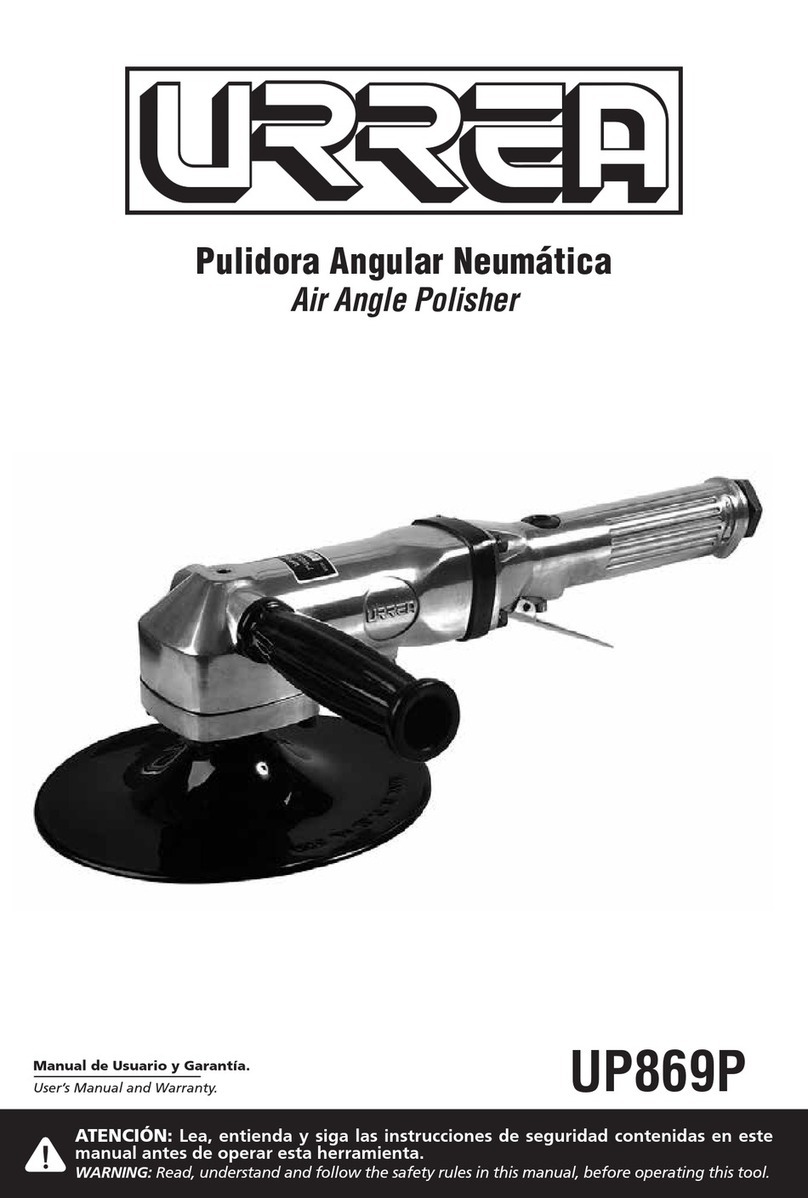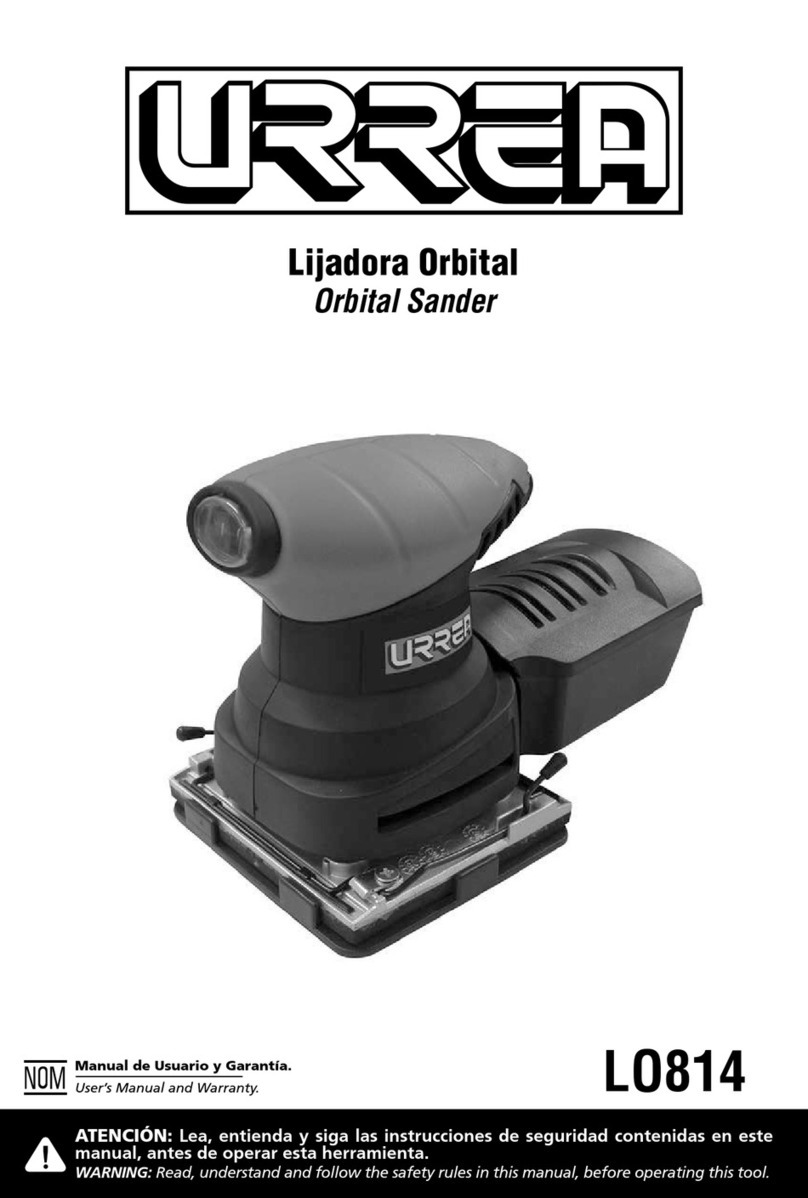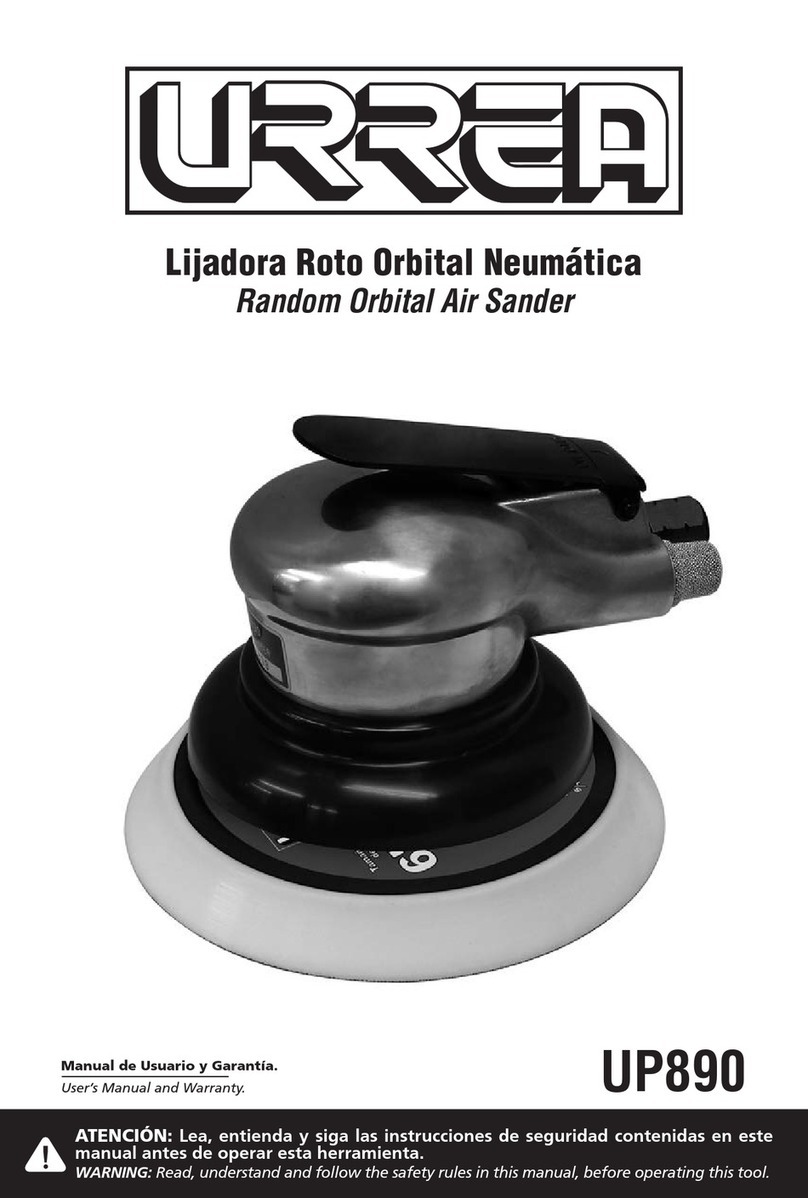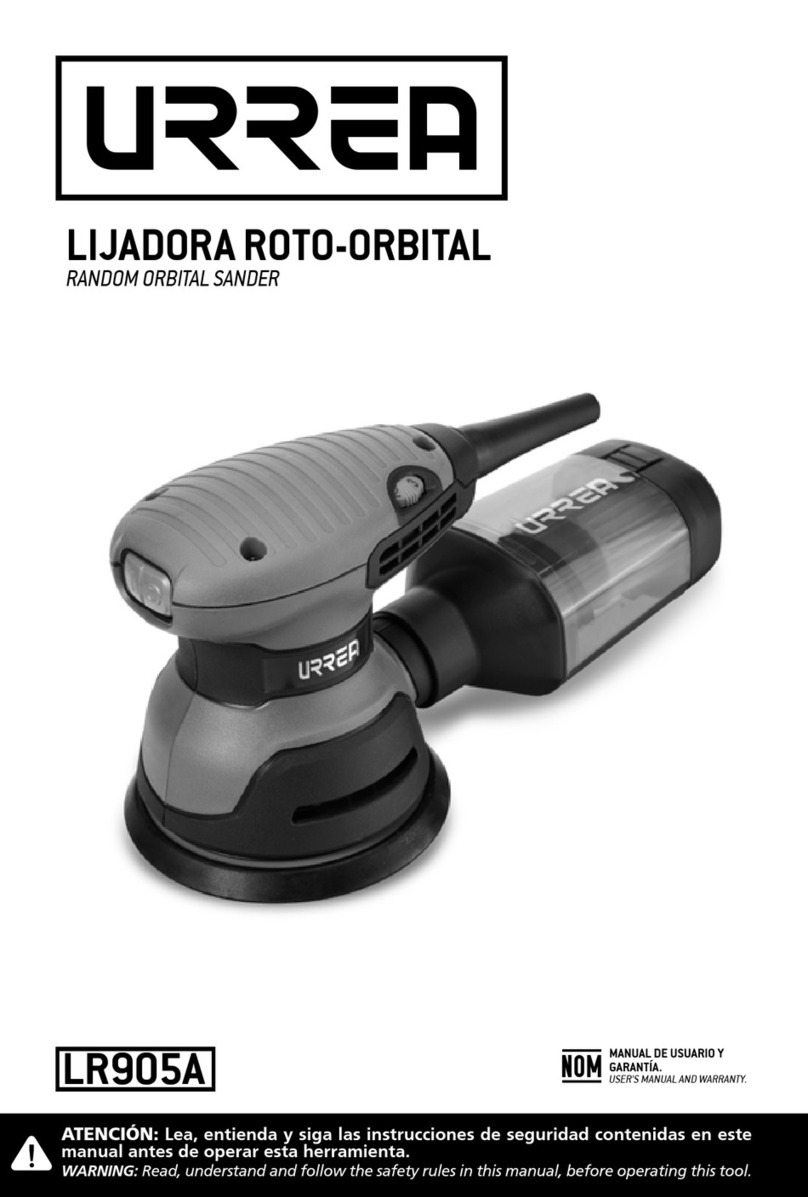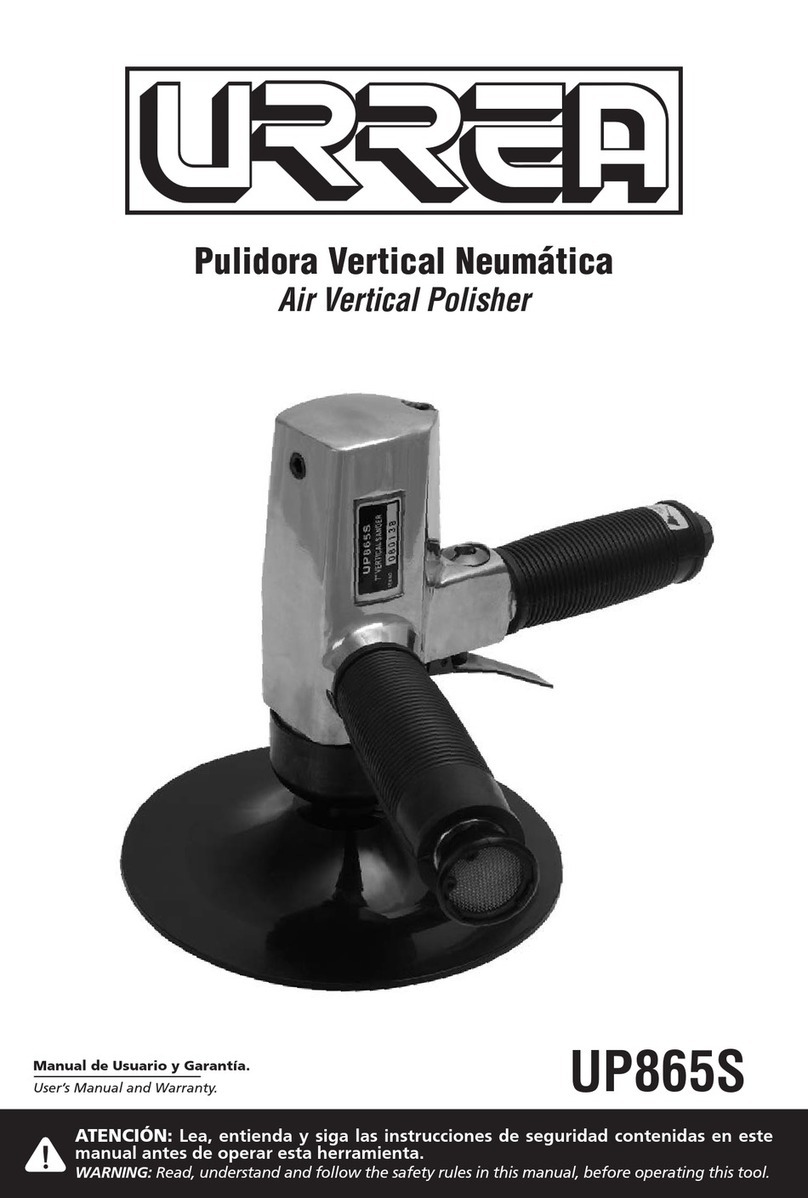
diatamente e inspeccione la lija para ver si se
encuentra gastada o dañada. Reemplace las
partes dañadas. Si aun percibiera ruidos o vi-
braciones anormales, devuelva el producto al
fabricante para que lo repare o realice un servi-
cio. Lea las instrucciones de la garantía.
INSTRUCCIONES DE OPERACIÓN
PREVIO AL FUNCIONAMIENTO
La herramienta ha sido diseñada para funcio-
nar manualmente. Siempre se recomienda que,
mientras se esté utilizando la herramienta, los
operadores permanezcan de pie sobre un piso
sólido, en una posición segura con un agarre y
una base firmes. Tenga en cuenta que la lija-
dora puede ocasionar una reacción de torque.
Vea la sección de “ADVERTENCIAS DE SEGURI-
DAD”.
Utilice un suministro de aire limpio y lubrica-
do que provea a la herramienta una presión
medida de aproximadamente 90 PSI cuando la
herramienta se encuentre funcionando con la
palanca totalmente presionada. Se recomien-
da utilizar una línea de aire aprobada de 10
mm (3/8 pulgadas) x 8 m (25 pies) de longitud
máxima. No conecte la herramienta al sistema
de aire sin una válvula que cierre fácilmente el
aire. Se recomienda utilizar un filtro, regulador
y lubricador de aire, ya que este mismo brinda-
rá aire limpio y lubricado en la presión correcta
a la herramienta. Cuando la presión de sumi-
nistro exceda el máximo marcado de la herra-
mienta en cualquiera de los casos, se utilizarán
en todo momento reguladores de presión de
aire adecuados mientras la herramienta esté
en funcionamiento.
Se pueden obtener detalles de tal equipo a
partir de su distribuidor de herramientas. Si no
se utilizara tal equipo, la herramienta deberá
ser lubricada manualmente. Para lubricar ma-
nualmente la herramienta, desconecte la línea
de aire y coloque de 2 a 3 gotas del aceite lu-
bricante adecuado para motores neumáticos
dentro del extremo de la manguera (entrada
de aire) de la herramienta. Reconecte la herra-
mienta al suministro de aire y haga funcionar
la herramienta muy lentamente durante algu-
nos segundos para permitir que el aire haga
circular el aceite. Si se utilizara la herramienta
con frecuencia, lubríquela diariamente o lubrí-
quela si la herramienta comenzara a disminuir
su intensidad o a perder fuerza.
Se recomienda que la presión del aire en la
herramienta sea de 90 PSI mientras que la he-
rramienta esté funcionando para que no se ex-
ceda el máximo de revoluciones por minuto. Se
puede hacer funcionar la herramienta a menor
presión pero nunca a más de 90 PSI. Si funcio-
nara con una presión más baja, el rendimiento
de la herramienta disminuiría
PRECAUCIONES ADICIONALES DE SEGURI-
DAD
1. Lea todas las instrucciones antes de utilizar
la herramienta. Todos los operadores deben
estar ampliamente capacitados para usarla y
ser conscientes de estas medidas de seguridad.
2. Asegúrese de que la herramienta esté desco-
nectada al suministro de aire. Elija un abrasivo
apropiado y asegúrelo a la base de la lija con
las pinzas de sujeción.
3. Siempre use el equipo de seguridad requeri-
do al utilizar esta herramienta.
4. Cuando esté lijando siempre encienda la
herramienta sobre la pieza de trabajo. Esto
evitará que se produzcan abolladuras debido
al exceso de velocidad del abrasivo. Detenga
el flujo de aire hacia la herramienta a medida
que se retira de la pieza de trabajo.
5. Siempre retire el suministro de aire de la lija-
dora antes de colocar, ajustar o retirar una lija.
6. Siempre permanezca de pie con un agarre y
una base firmes y preste atención a la reacción
de torque que desarrolla la lijadora.
7. Siempre asegúrese de que el material que
está lijando esté sujetado con firmeza para evi-
tar que se mueva.
8. Revise la manguera y los accesorios regular-
mente para detectar si hay desgaste. No mueva
la herramienta sosteniéndola de la manguera;
siempre tenga cuidado de evitar que la herra-
mienta se encienda cuando la traslada con el
suministro de aire conectado.
9. No exceda el máximo de presión de aire re-
comendado. Utilice un equipo de seguridad
según se recomienda.
10. Antes de instalar cualquier accesorio abra-
sivo, siempre verifique la velocidad máxima
requerida impresa en el accesorio sea igual o
mayor a la indicada en el producto.
ESPAÑOL •
Manual de Usuario
3
UP766 manual.indd 3 10/06/15 9:32
